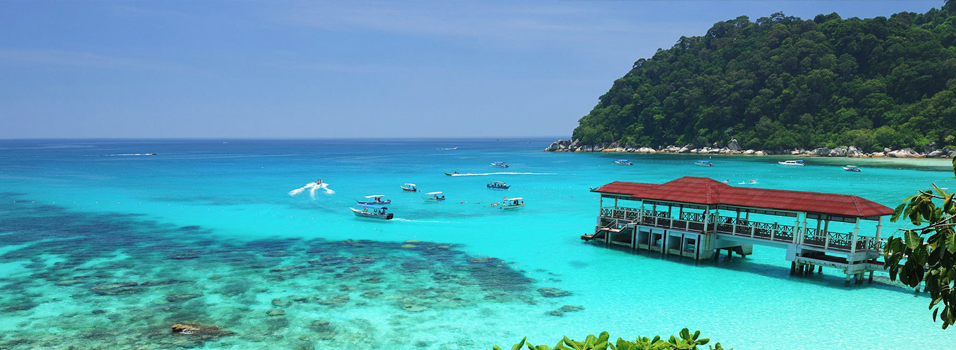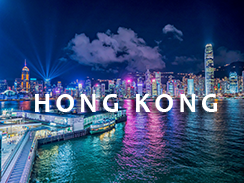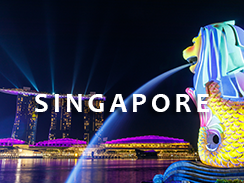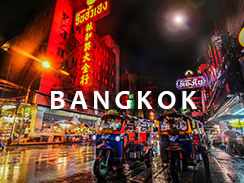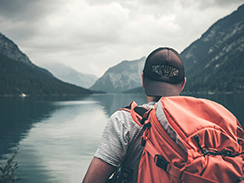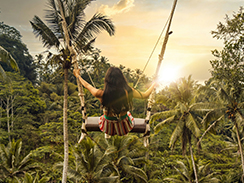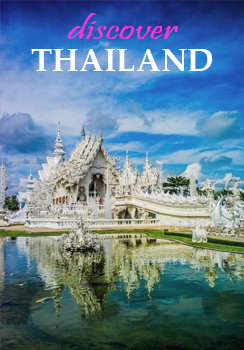The Perhentian Islands
The Perhentian Islands, located off the northeastern coast of Peninsular Malaysia, are some of the country's most stunning and popular beach destinations. The islands offer a mix of natural beauty, rich marine life, and a laid-back vibe that attracts visitors looking for a peaceful retreat or an exciting adventure. Here's a closer look at what makes the Perhentian Islands such a beloved getaway:
Overview of the Perhentian Islands:
- Location: The Perhentian Islands are part of the Pulau Redang National Marine Park and are located in the South China Sea, about 20 kilometers off the coast of Terengganu. The islands are accessible by boat from the mainland town of Kuala Besut.
- Name: "Perhentian" means "stopping point" in Malay, originally referring to the islands' role as a rest stop for travelers on long sea journeys, particularly between Malaysia and Thailand.
- Tourism: Once primarily supported by fishing, the islands now rely on tourism for their income. Fishing is prohibited in the area to protect the marine ecosystem.
Island Highlights:
1. Beaches:
- Perhentian Kecil (Small Island):
- Long Beach: The more lively of the two main beaches on Kecil, it’s popular among backpackers for its vibrant atmosphere, with beach bars, budget accommodations, and party vibes. However, it's also known for petty theft, so visitors should remain cautious with their belongings.
- Coral Bay: A quieter and more relaxed beach on Kecil, perfect for sunset viewing, reading, and enjoying the peaceful surroundings. It’s a great choice for travelers looking for tranquility.
- Perhentian Besar (Big Island):
- As the name suggests, it’s larger than Kecil and is known for its more upscale resorts, catering mostly to couples and honeymooners. The island has a more serene atmosphere with fewer crowds, and it’s surrounded by beautiful beaches perfect for swimming, snorkeling, and sunbathing.
2. Wildlife & Marine Life:
- Underwater Paradise: The marine life surrounding the islands is nothing short of spectacular. Visitors can enjoy seeing:
- Sea Turtles: These gentle creatures are often spotted while snorkeling and diving.
- Clownfish: Famous for their appearance in "Finding Nemo," these colorful fish thrive around coral reefs.
- Blue-Spotted Rays: Elegant and mesmerizing, these rays can often be seen gliding through the water.
- Black-Tipped Reef Sharks: While not dangerous to humans, these sleek predators are a common sight for scuba divers.
- Snorkeling & Scuba Diving: The clear waters around the islands are ideal for both snorkeling and scuba diving. Many of the resorts on Kecil offer snorkeling trips and equipment rentals. For divers, there are plenty of dive shops on both Coral Bay and Long Beach, offering trips to famous dive sites like The Pinnacle.
3. Activities:
-
Snorkeling Trips: Several resorts and operators arrange snorkeling excursions, taking visitors to vibrant coral reefs and ensuring close encounters with marine life. A standout experience is jumping off the lighthouse on Kecil, with a thrilling dive into the deep sea below.
-
Diving: The Perhentian Islands are a diving paradise. Certified divers can explore the islands’ deep-sea wonders, including colorful reefs, underwater pinnacles, and abundant marine life.
-
Wildlife Watching: For those more interested in terrestrial wildlife, the islands also have monitor lizards, geckos, and the occasional snake. While the monitor lizards and spiders may be unsettling for some, the geckos provide a fun spectacle as they hunt for mosquitoes around the island’s bungalows.
4. Atmosphere:
-
Laid-back Vibe: The Perhentian Islands are known for their relaxed and peaceful atmosphere, with fewer crowds compared to other tourist hotspots in Southeast Asia. While Perhentian Kecil’s Long Beach has a youthful, party atmosphere, Coral Bay and Perhentian Besar are quieter, making the islands suitable for all types of travelers, from party-goers to honeymooners and nature lovers.
-
Lack of Alcohol: Unlike other islands in Southeast Asia, the Perhentians are not known for their wild nightlife or abundance of alcohol. While there are some bars on Long Beach, many travelers prefer bringing their own beverages or opting for a dry holiday. This adds to the more wholesome, nature-focused experience of the islands.
Accommodation:
-
The Perhentian Islands offer a range of accommodations, from budget guesthouses and beachfront bungalows to mid-range resorts. Many of the resorts are on Perhentian Kecil and cater to backpackers and budget travelers, while Perhentian Besar offers more luxurious options for those seeking a quieter, more upscale experience.
-
Booking Tips: It’s best to book your accommodation in advance, especially during peak seasons (March to October). Prices vary based on the time of year, with weekends and holidays typically costing more.
Practical Tips:
-
Getting There: The islands are accessible by boat from Kuala Besut, which can be reached by car or bus from Kuala Lumpur or Kota Bharu. The boat ride takes around 30 minutes to an hour, depending on sea conditions.
-
Weather: The Perhentians have a tropical climate, with a dry season from March to October. The rainy season is from November to February, during which some resorts close due to rough seas.
-
Cash: While some resorts may accept credit cards, it’s advisable to bring enough cash for your stay, as ATMs are limited on the islands.
Conclusion:
The Perhentian Islands offer a perfect blend of natural beauty, diverse marine life, and a laid-back island lifestyle. Whether you’re there for the stunning beaches, thrilling underwater experiences, or just to relax in peace, the Perhentians provide a memorable and rejuvenating escape. It’s an ideal spot for nature lovers, adventure seekers, and anyone looking to unplug from the hustle and bustle of everyday life.

